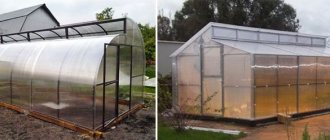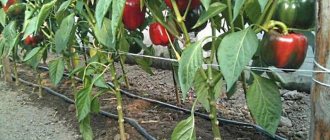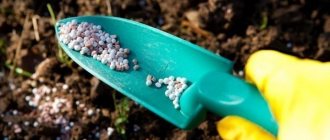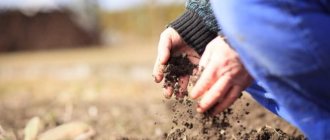Potatoes are the main crop grown in almost every area. Most of the garden area is usually allocated for it. Caring for this plant is not technologically difficult, but it takes a lot of time and effort. Therefore, many owners of suburban areas are looking for ways and testing a variety of technologies to make their work easier. One of the most interesting is the method of the American farmer Jacob Mittleider. Further in the article we will talk about this relatively new method for our country.
Reviews from gardeners
Domestic gardeners have a mixed opinion about this method of growing potatoes. Some people consider it unusually convenient, since it allows you to avoid such labor-intensive operations as digging up large amounts of soil, hilling and loosening. Others say it is unsuitable for Russian conditions due to insufficient lighting. When using this technology, simply a huge amount of chemical fertilizers is introduced into the ground. And if the process of photosynthesis in plants is not active enough, a lot of nitrates will accumulate in the tubers.
Owners of suburban areas with soil poor in nutrients highly praise this method, such as planting potatoes according to Mittleider. They have very good reviews about it. It is up to you to judge how suitable it is for your site. Next, we will consider the basic principles of planting potatoes using this method.
Is this method right for you: main advantages and disadvantages
The method is suitable not only for small areas. It allows you to collect 15-30% more harvest from any planted area, compared to the conventional planting method. If you are willing to devote a little more time than usual to caring for potatoes, then the Mittleider method is for you. Additional recommendations for fertilizing and watering are quite reasonable. You will not regret the effort when you get a bountiful harvest with a bright, rich taste.
The main advantages of the technique:
- no need to loosen the soil and hill up the bushes;
- the possibility of obtaining a good harvest on any soil and under any climatic conditions (the lack of nutrients in the soil is compensated by the abundant use of fertilizers).
Flaws:
- You can’t use wet soils for planting;
- it takes a lot of money to buy fertilizers;
- Only areas abundantly supplied with sunlight are suitable (in the shade, tubers accumulate nitrates, which are harmful to health).
If the method suits you, let's move on to a description of the planting technique and care rules.
Potato harvest grown using the Mittleider method
Site breakdown
Potatoes are planted according to Mitlider as follows:
- The area is carefully leveled. No shading is allowed.
- All perennial weeds are removed.
- Narrow (45 cm) and long beds are arranged. The distance between them should be about 60-110 centimeters. In this way, maximum illumination is achieved and the workload is reduced. The beds are located exclusively in the direction from north to south. In this case, the plants will be illuminated around the clock: in the morning from the east, in the afternoon from above, in the evening from the west. In areas located on a slope, the beds are arranged in the form of terraces (steps).
- Row spacing is not dug up. This also significantly reduces labor costs.
- In subsequent years, the row spacing and beds do not change places.
On fatty nutrient soils with a neutral reaction, beds are made in the usual way, arranging earthen sides 10 cm high. In areas with acidic or poor soil, boxes without a bottom are installed, made of boards about 30 cm high. The soil mixture is poured into them. The degree of soil fertility does not play a special role when using the Mittleider method. Therefore, the boxes can be filled, for example, even with a regular mixture of sand (40% by volume) and sawdust (60%). The layer thickness should be approximately 20 cm. Productivity is ensured by balanced fertilizing.
Preparation of seed material
Planting potatoes according to Mittleider involves using the highest quality tubers. This crop can be planted either directly in the beds or using the seedling method. The second method when using this technology is considered more preferable. Carrying young potato bushes from one place to another at the beginning of the growing season stimulates their further growth. In addition, in this case you can get a much earlier harvest. Prepare potato seedlings a week before planting in the ground as follows:
- A three-centimeter layer of sawdust soaked in a 0.2% solution of copper sulfate is poured onto the bottom of the boxes.
- Tubers are placed on them close to each other.
- Sprinkle sawdust on top of the potatoes so that a layer of 1-1.5 cm is formed above it.
- Install the boxes in a room with an air temperature of 12-14 degrees.
After 7 days, thick short sprouts and small roots appear on the tubers. 2 hours before planting, the seedlings are watered with a solution of complex garden fertilizer. You cannot overcook the tubers. If the roots grow too long, they will certainly be damaged during transplantation. And this, in turn, will greatly slow down the growth of plants.
Harvesting
Harvesting, depending on the chosen variety, can be done as early as June - early-ripening varieties are harvested, and late-ripening varieties are harvested at the end of September. This work is best done with a pitchfork, and if you grow potato varieties with thick skins, you can use motor cultivators or other similar equipment. You can dig up potatoes as soon as the stem lies on the ground and is completely dry. If frost is approaching and the tops are still green, you can tilt them to the side, slightly breaking the stem.
You can dig potatoes 15 days after this procedure. Immediately after harvesting, the grown potatoes must be stored. Remember that the duration of such storage of the harvested crop depends on the conditions in the storage facility. It is best to store potatoes in a cellar or garage pit. It is best to store vegetables in wooden boxes sprinkled with sawdust. In this case, you can save your harvest until next summer.
Planting potatoes according to Mittleider: fertilizers
Before transporting seedlings, the soil mixture in boxes or the soil in ordinary beds should be thoroughly fertilized. For this purpose, compositions specially developed by Mitlider are used. There are only two varieties.
Mixture No. 1 consists of:
- 40 g boric acid;
- 5 kg of dolomite flour.
For each meter of planting, 100 g is applied.
Mixture No. 2 is made up of the following ingredients:
- magnesium sulfate – 500 g;
- ammonium nitrate – 1400 g;
- ammophos – 600 g;
- molybdic acid – 5 g;
- boric acid – 5 g;
- potassium sulfate – 1100 g.
The consumption of this mixture should be 50 g per square meter. Fertilizers are the basis of such an operation as planting potatoes according to Mittleider. Photos of the resulting neat beds can be seen on this page.
First, the first mixture is added to the boxes or beds, then the second.
Mulching
The procedure helps protect young bushes and promotes their full development. It has been noticed that mulching helps the crop grow faster. For the procedure, humus, crushed bark, compost, reed and finely ground grass are used. The prepared composition has a beneficial effect on the soil, increasing its content of organic substances. The layer should cover the potatoes from 5 to 10 cm.
Mulch thins over time as a result of precipitation and regular watering. In this case, the mulching procedure is repeated.
Potato planting scheme according to Mittleider
Boxes with sprouted tubers are transferred to the garden. Holes are made in the beds with a depth of no more than 10-15 cm. Planting is done in two rows in a checkerboard pattern. Each tuber is carefully lifted by hand and transferred to the garden bed along with sawdust.
The plantings are fertilized two more times per season with the same mixtures. The first time - after the bushes have grown by 15 cm. The second time - before budding begins. In this case, the mixtures are applied not under the plants themselves, but in the center of the bed or box. Otherwise, you can burn the roots.
Proper watering
Proper watering is another fundamental condition for success when using a technology such as the Mittleider method. Potatoes are planted in moist soil. Subsequently, so that all fertilizers are absorbed by the plants without residue, they should be watered very often. Ideally - daily. In any case, the soil should not be allowed to dry out. If constant manual watering is not possible, drip irrigation should be installed.
In normal cases, the soil is moistened using a hose with a moderate stream using the “root” method. When using this technology, watering can be carried out not only in the morning and evening, but also during the day, in the hottest sunshine. There is no need to loosen or hill up the beds.
Common mistakes in caring for potatoes
Most gardeners prefer not to follow clear recommendations, but to add their own creative touch and come up with new rules for caring for potatoes. If you want to receive the promised harvest, avoid the following mistakes.
- With regular feeding, lack of watering contributes to the accumulation of chemicals in the soil. Their concentration reaches a maximum and destroys potato roots. Watering 1-2 times a week can destroy the bushes; it should be done at least once every 2 days.
- If the soil on your site is alkaline, do not use dolomite flour for the first mixture. Use plaster of Paris instead.
- Mix the applied fertilizer thoroughly. The better you loosen the soil, the more evenly it will be distributed between the potato roots.
- Do not place bushes on slopes. The water will always flow to one end of the bed. Plants on it will suffer from excess moisture, and at the other end - from dryness. You can level the surface of the ridge using a building level.
- Do not introduce additional ingredients into mixtures or remove them unnecessarily.
Potato flowering
Video - Vegetable garden using the Mitlider method in practice
Which varieties to choose
Mitlider's technique can be used for growing both early, mid- and late-ripening potatoes. The choice of variety, as with conventional technology, depends primarily on the climate characteristics of a given region. Special zoned varieties are best suited for growing using this method.
As you can see, planting potatoes according to Mitlider and growing this crop in a similar way is a simple technology that can significantly reduce physical costs. It is very suitable for areas with poor soils. The most important thing is to provide the plants with good lighting so that nitrates do not accumulate in them, and to prevent the soil from drying out.
Advantages of narrow beds
Narrow beds are an excellent solution for gardeners with a small plot of land. They alternate with wide row spacing. This provides the bushes with good lighting. Thanks to this, it grows actively and brings a large harvest. Also, a narrow bed makes it easy to apply fertilizer.
Narrow ridges on uneven terrain and infertile lands
Uneven land is not suitable for growing potatoes using the Mittlider method. First of all, they make caring for bushes in the garden inconvenient. If a person ignores this rule and makes many mistakes, the yield level decreases. Infertile soil is not a problem, because the method involves the use of fertilizers to provide adequate nutrition to potato tubers.











